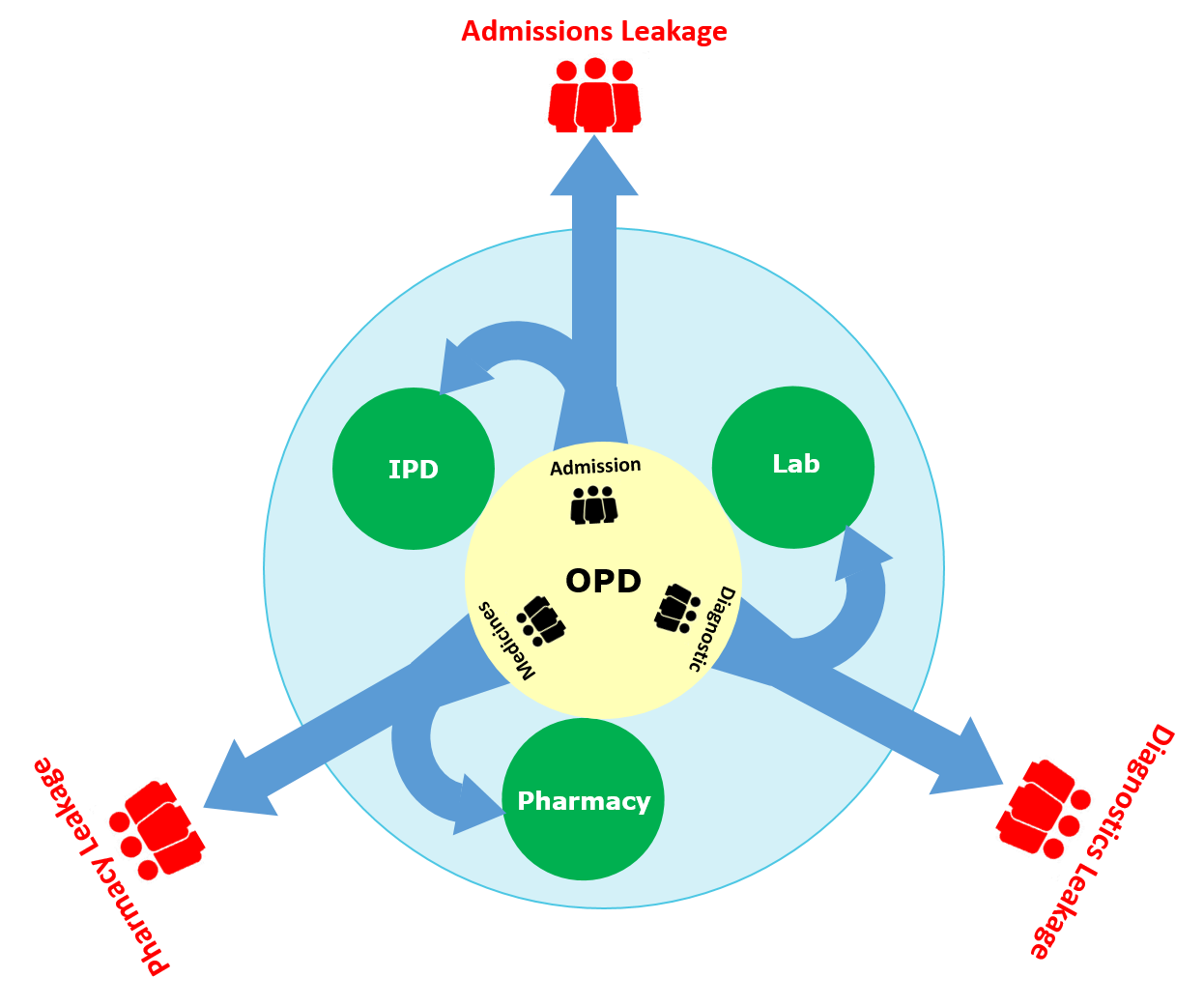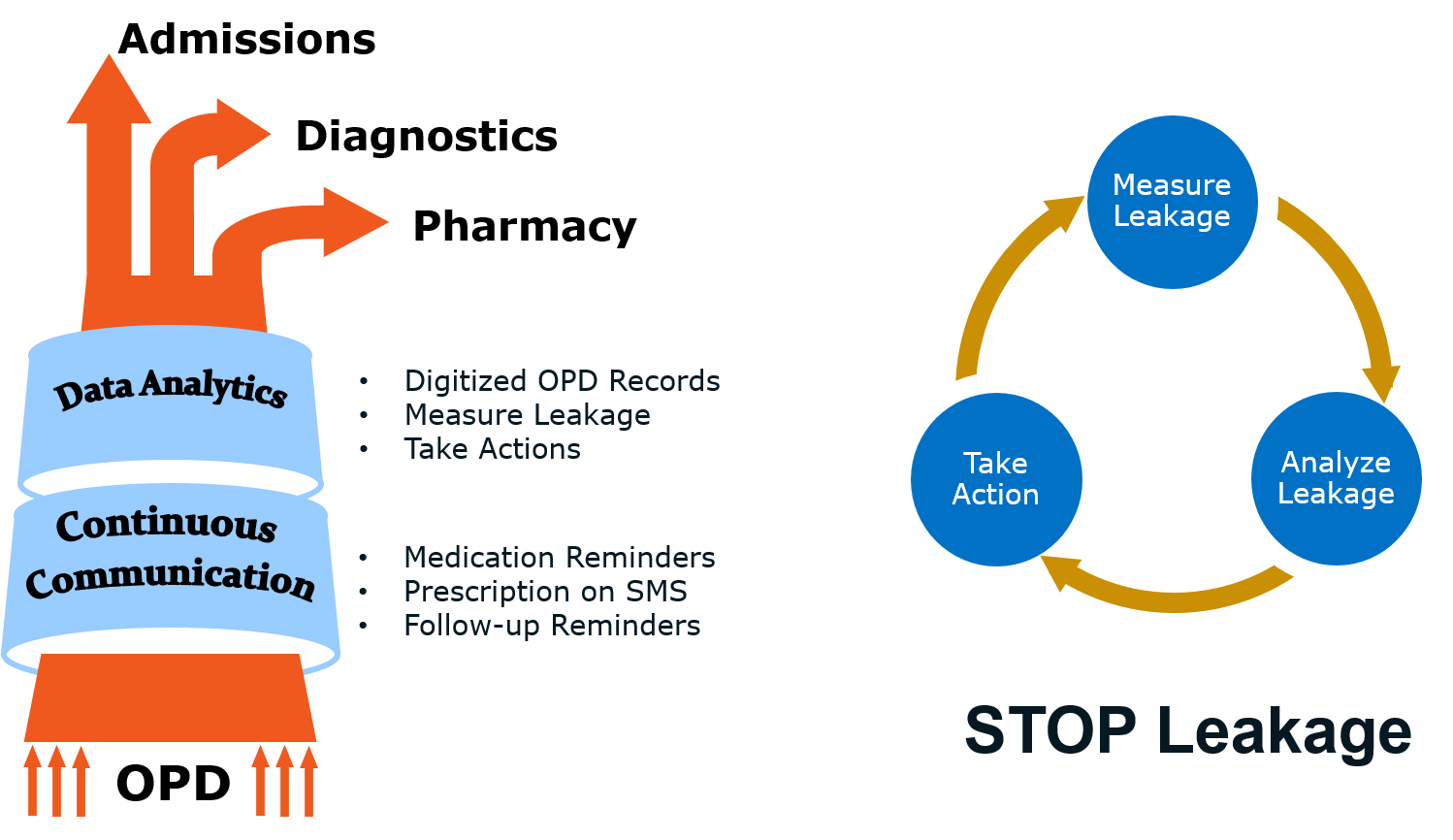Contents
Significant OPD but Tiny Sales in IP, Diagnostics & Pharmacy?
Hospitals have two big challenges to stay profitable. First, they have to continuously work to get new patients to discover their hospital. Second, most important aspect, is to get as much revenue from each patient visit. The second one drives both top-line and bottom-line significantly, but is also the least understood process due to inherent limitations. Many hospitals achieve great OPD inflow but very little sales in IP, diagnostics and pharmacy. If you are facing this problem, then this article is for you!| Typical OP to IP Conversions in Metro Cities | |
|---|---|
| Conversion Rate (%age) | |
| Average | 13% |
| Good | 15% |
| Excellent | 18% |
Understanding patient flow at hospital
For multi-specialty hospitals, OPD is like a landing place where patients first land. Based on the treatment advised on OPD records (mostly prescriptions), patients can either use pharmacy, diagnostics or IP services inside the hospital or from other providers outside. For example, a patient coming to OPD with chronic pain would need to get scanning, medicines, surgical belts and physiotherapy. Patient could do these either inside the hospital or outside hospital.
Need to measure leakage
Unfortunately with current set of tools available with hospitals, they cannot measure this leakage effectively and continuously. Although hospitals know very well on who is landing on their pharmacy, lab and admissions, they do not know who were advised one of these but chose to go out for fulfillment. If somehow their OPD records became digital they could measure this easily. But this does not happen and hence the fallout. What they actually need is digitization of their OPD records. The only option available to hospitals is using EMR which is very costly in terms of allocating resources or equivalent cost of doctor’s time for electronic-entry. Nor are the specialists and super-specialists inclined to do it. The benefits of digitizing OPD records are obvious but how can this be achieved efficiently? How can this be done with no changes to current work-flows for the hospital and the doctors?Proposed solution to reduce leakage
Do hospitals need to live with this till EMR becomes a reality? No! There is a solution.
Summary
Aggregate Rating
5 based on votes
Brand Name
mTatva
Product Name
Health-PIE